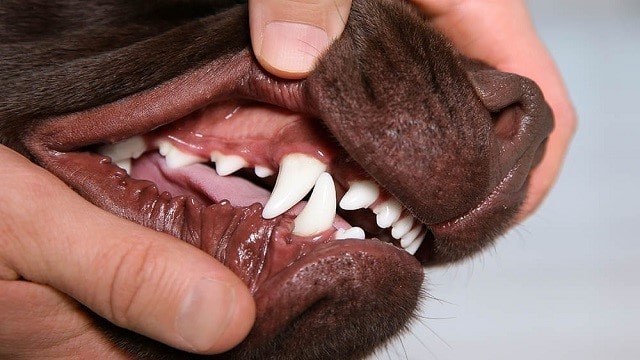Just as we bathe our pets to keep them clean and free of parasites, we have to clean their teeth to prevent diseases.
Just like we do every morning before leaving the house, we must clean our dog’s teeth so that their teeth and dentures stay strong and healthy. Hygiene in our pet is something that we must not neglect and we must pay a lot of attention to. Lack of dental health can cause many problems in your dog, including cavities, generalized infections when bacteria enter the bloodstream or even aggression caused by pain and inflammation. Below we will show you the best way to brush your dog or puppy’s teeth and why.
How to clean your teeth
To start, it is best to get your dog used to dental hygiene from the time he is a puppy, so that little by little he will see it as something normal and not aggressive or harmful to the dog.
Your pet may not like it at first because it’s something new and strange, but you can make it an enjoyable experience and a bonding moment between you and your dog. Try cleaning your dog’s teeth after your puppy has had plenty of exercise, as this will make it more likely for him to stay still and make it easier for you. Avoid staying too long so that your dog doesn’t get tired and try to escape, and once you’re done, give him a treat so he associates this activity with a reward.
Using specific products
You should keep in mind that you should not use products for humans, but rather special products for dogs so that they do not hurt themselves or harm them. Apart from special toothbrushes for dogs and toothpaste, which usually have a pleasant taste for the dog itself, we can find other types of dental hygiene products on the market such as: ‘cleaning’ toys, chew toys designed especially to clean your dog’s teeth. Many of them come in the form of bones, but they can come in any shape. Other toys can come in the form of ropes, which help maintain your dog’s dental hygiene through games. If you buy these ropes, do not leave them with your dog all the time, as he could tear them up and swallow the pieces. Only give them to him when you can supervise your puppy.
Remember that before purchasing any of these dog grooming products, you should consult with your veterinarian. He or she will be able to tell you which ones are best and safest for your dog or puppy. Once your dog is comfortable with both the taste of the toothpaste and the feel of the brush, begin brushing properly, one tooth at a time. Lift the side of your dog’s lips and brush back and forth, not up and down as is recommended for people.
How often should teeth be cleaned?
When the dog is still a puppy, it is best to clean its teeth once every two or three days to avoid overwhelming the dog and making it think that this activity is unpleasant for it. Once the dog has grown enough, its teeth can be cleaned every other day , since excessive dental cleaning can attract other kinds of diseases.
Possible diseases arising from lack of cleanliness
There are several problems that can arise in our pets’ mouths, which is why it is essential to monitor how their teeth are developing and pay close attention to see if any substantial changes are observed that require veterinary attention.
The first warning sign that our pet has a problem due to poor dental hygiene is inflammation and redness of the gums instead of the normal pink color, something that often goes unnoticed by the owner, which is why it is necessary to check the dog’s teeth at least once a week.
Another possible problem that can be caused by a lack of cleanliness in your mouth is dental tartar, with an inflammatory reaction of the gums (gingivitis). In addition, this can cause its subsequent deposit, forming plaques that destroy the adhesions of the gums to the bone, which creates pockets in the gum, reaching the deeper layers with destruction of the periodontium (periodontitis) with loosening and loss of teeth.
Microscopically, dental tartar itself can be yellow, brown, green or blackish brown in color, with a very unpleasant appearance.
Halitosis ( bad breath ) should be a warning sign since sometimes tartar is not visible without the help of special dyes or is simply hidden from view or is subgingival.
Dental diseases in dogs
Periodontal disease is the most common disease in any breed of dog. The disease begins as gingivitis, inflammation of the gums. Gingivitis is reversible if treated in time, but if it progresses to periodontitis, it affects all the periodontal ligaments as well as the dental alveolus and the only solution would be to remove the affected tooth with general anesthesia.
Another disease that can result from poor dental hygiene is enamel hypoplasia, which is a series of lesions on the tooth enamel as if it were fragmented or depressed, and when there is tartar buildup, it is very evident. It can be congenital or acquired and is closely related to distemper in unvaccinated puppies.
Abscesses are the result of gingivitis that is not treated in time. Painful abscesses can form that are sometimes not visible to the naked eye or palpable, but if not treated, they can even put the dog’s life at risk because they are a tremendous source of infection.

